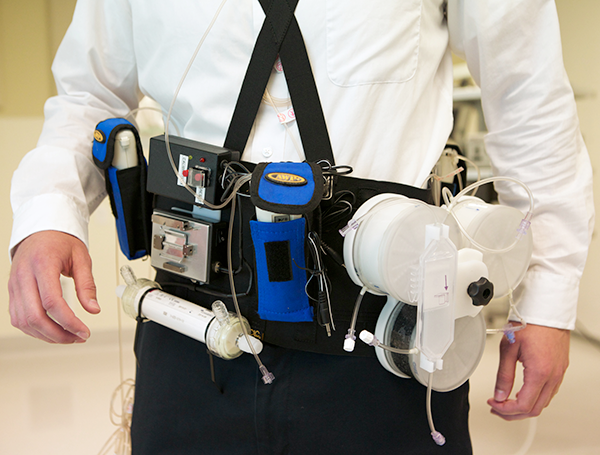
Kidney failure typically leads to people regularly wasting a great deal of their time being tethered to a dialysis machine. Though they’re life savers, dialysis machines have not kept up with much of the rest of the medical device industry in getting smaller, more portable, and easier to use. Things may be about to change, though, as a new wearable dialysis system is about to be tested in a clinical trial in the U.S.
The Wearable Artificial Kidney (WAK), as it’s called, looks like a disassembled traditional dialysis machine whose parts have been slapped onto to a large belt for carrying around the torso. The device really does reproduce the components of a stationary dialysis system, but with a few modifications. For one, it’s battery powered, but more importantly the device doesn’t require an external source of pure water, instead continuously filtering the water that was used and reintroducing it back into the device. The entire package weighs about ten pounds, but the researchers believe it can be made even lighter.
The trial will involve up to 16 patients in an inpatient setting and will last 24 hours, during which blood samples will be taken. The patients will also be followed up on for a month afterwards.
Here’s one of the leaders of the project showing off the Wearable Artificial Kidney:
FAQ: Seattle Wearable Artificial Kidney safety trial…
UW Health Sciences: Wearable Artificial Kidney safety test receives go-ahead…
